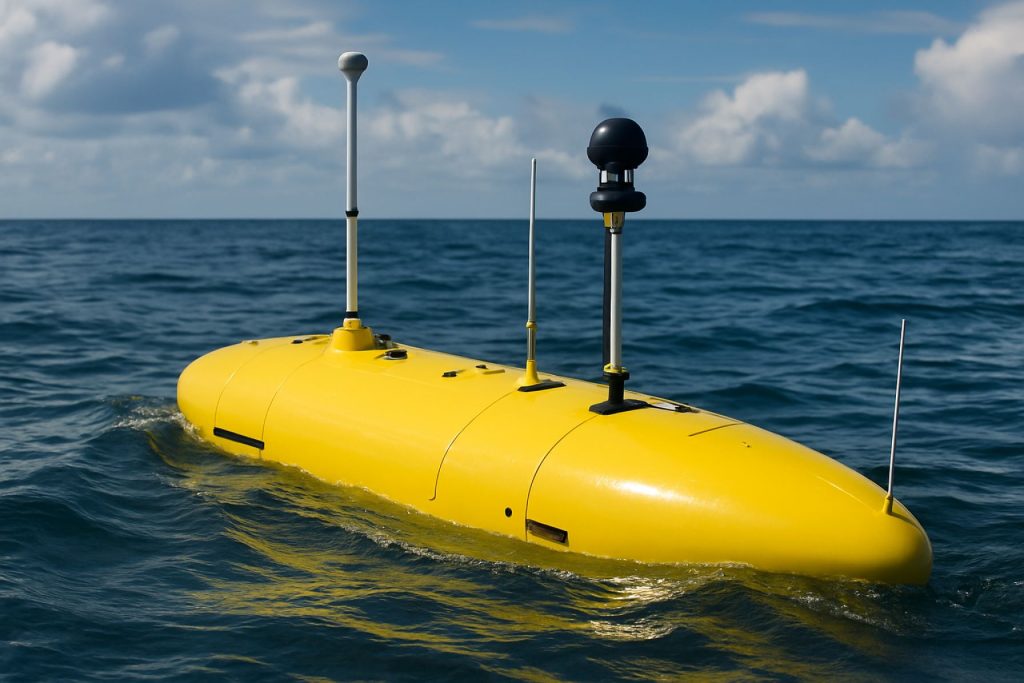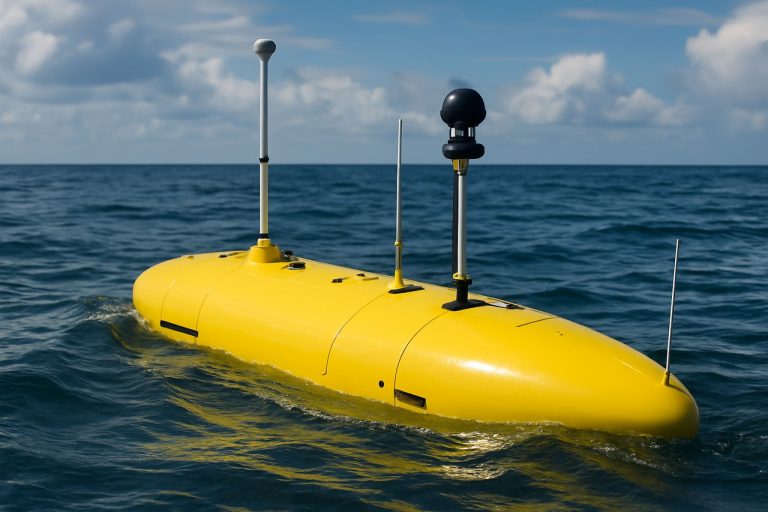
2025 Autonomous Unmanned Oceanographic Surveying Market Report: Trends, Forecasts, and Strategic Insights for the Next 5 Years
- Executive Summary and Market Overview
- Key Technology Trends in Autonomous Oceanographic Surveying
- Competitive Landscape and Leading Players
- Market Growth Forecasts and Revenue Projections (2025–2030)
- Regional Analysis: Opportunities and Market Share by Geography
- Future Outlook: Innovations and Emerging Applications
- Challenges, Risks, and Strategic Opportunities
- Sources & References
Executive Summary and Market Overview
Autonomous unmanned oceanographic surveying refers to the use of robotic systems—such as autonomous underwater vehicles (AUVs), unmanned surface vehicles (USVs), and remotely operated vehicles (ROVs)—to collect, analyze, and transmit oceanographic data without direct human intervention. This technology is transforming marine research, resource exploration, environmental monitoring, and defense operations by enabling persistent, cost-effective, and high-resolution data collection in challenging and remote marine environments.
The global market for autonomous unmanned oceanographic surveying is poised for robust growth in 2025, driven by increasing demand for real-time ocean data, advances in sensor and navigation technologies, and the expansion of offshore energy and infrastructure projects. According to MarketsandMarkets, the autonomous underwater vehicle (AUV) market alone is projected to reach USD 2.7 billion by 2025, with a compound annual growth rate (CAGR) of over 20% from 2020 to 2025. This growth is mirrored in the broader unmanned marine systems sector, which includes USVs and hybrid platforms.
Key market drivers include the need for efficient seabed mapping, subsea infrastructure inspection, and environmental impact assessments, particularly as offshore wind, oil & gas, and subsea cable projects proliferate. Governmental and intergovernmental organizations, such as the National Oceanic and Atmospheric Administration (NOAA) and the International Maritime Organization (IMO), are also investing in autonomous systems to support climate research, marine biodiversity monitoring, and maritime security.
Technological advancements are accelerating market adoption. Enhanced battery life, AI-driven navigation, and miniaturized, high-resolution sensors are enabling longer missions and more granular data collection. Leading industry players, including Kongsberg Maritime, Teledyne Marine, and Saab, are expanding their portfolios with modular, scalable platforms tailored for diverse oceanographic applications.
Regionally, North America and Europe dominate the market due to strong research funding, established maritime industries, and regulatory support. However, Asia-Pacific is emerging as a high-growth region, fueled by coastal infrastructure development and increasing marine research initiatives, particularly in China, Japan, and Australia.
In summary, the autonomous unmanned oceanographic surveying market in 2025 is characterized by rapid technological innovation, expanding application scope, and strong investment from both public and private sectors, positioning it as a critical enabler of sustainable ocean management and blue economy growth.
Key Technology Trends in Autonomous Oceanographic Surveying
Autonomous unmanned oceanographic surveying is rapidly transforming the way marine data is collected, analyzed, and utilized. In 2025, several key technology trends are shaping this sector, driven by advances in robotics, artificial intelligence (AI), sensor miniaturization, and data connectivity. These innovations are enabling more efficient, cost-effective, and comprehensive oceanographic surveys, supporting applications ranging from climate research to offshore energy exploration.
- Next-Generation Autonomous Underwater Vehicles (AUVs): The latest AUVs are equipped with enhanced navigation systems, longer battery life, and modular payloads. These improvements allow for extended missions, deeper dives, and the collection of higher-resolution data. Companies such as Kongsberg Maritime and Teledyne Marine are at the forefront, offering AUVs capable of complex, multi-sensor operations.
- AI-Driven Data Processing and Mission Planning: AI and machine learning algorithms are increasingly used to process vast amounts of oceanographic data in real time, enabling adaptive mission planning and anomaly detection. This reduces human intervention and accelerates the delivery of actionable insights. OceanMind and Saildrone are leveraging AI to enhance data quality and operational efficiency.
- Swarm Robotics and Collaborative Surveying: Deploying fleets of smaller, networked unmanned vehicles—both surface and subsurface—enables large-scale, synchronized data collection. Swarm robotics improves spatial coverage and redundancy, as demonstrated by research initiatives at Monterey Bay Aquarium Research Institute (MBARI) and commercial deployments by Saildrone.
- Advanced Sensor Integration: The integration of miniaturized, high-precision sensors—such as multi-beam sonars, chemical analyzers, and environmental DNA samplers—expands the range of measurable parameters. This trend is supported by ongoing R&D at organizations like Woods Hole Oceanographic Institution (WHOI).
- Real-Time Data Transmission and Cloud Connectivity: Enhanced satellite and acoustic communication systems now enable near real-time data transfer from remote ocean locations to cloud-based platforms. This facilitates immediate analysis and decision-making, as seen in solutions from Iridium Communications and Inmarsat.
These technology trends are collectively driving the autonomous unmanned oceanographic surveying market toward greater autonomy, scalability, and scientific value, positioning it as a critical enabler for marine research and industry in 2025 and beyond.
Competitive Landscape and Leading Players
The competitive landscape of the autonomous unmanned oceanographic surveying market in 2025 is characterized by rapid technological innovation, strategic partnerships, and a growing number of specialized entrants. The sector is driven by increasing demand for high-resolution, real-time ocean data to support climate research, offshore energy, defense, and environmental monitoring. Key players are leveraging advancements in artificial intelligence, sensor miniaturization, and long-endurance power systems to differentiate their offerings.
Leading the market are established marine technology firms and defense contractors, alongside agile startups. Kongsberg Maritime remains a dominant force, offering a comprehensive suite of autonomous underwater vehicles (AUVs) and unmanned surface vehicles (USVs) with advanced payload integration and data analytics capabilities. Teledyne Marine is another major player, known for its modular AUV platforms and robust sensor technologies, catering to both commercial and governmental clients.
Startups such as Ocean Infinity have disrupted the market by deploying large fleets of unmanned vessels capable of simultaneous, multi-mission operations. Their focus on scalable, cloud-based data delivery has set new standards for survey efficiency and turnaround times. Saildrone has carved a niche with wind- and solar-powered USVs, enabling persistent, low-carbon ocean monitoring for climate and fisheries research.
Strategic collaborations are shaping the competitive dynamics. For example, Saab has partnered with research institutes and navies to co-develop next-generation AUVs with enhanced autonomy and endurance. Meanwhile, L3Harris Technologies is expanding its portfolio through acquisitions and integration of advanced navigation and communication systems.
- Kongsberg Maritime: Market leader in AUVs and USVs, strong global presence.
- Teledyne Marine: Renowned for sensor innovation and modular platforms.
- Ocean Infinity: Pioneer in large-scale, multi-vessel autonomous operations.
- Saildrone: Specialist in sustainable, long-endurance USVs.
- Saab: Focused on defense and research partnerships.
- L3Harris Technologies: Expanding through technology integration and acquisitions.
The market is expected to see further consolidation as larger players acquire innovative startups to enhance their technological edge. The competitive focus in 2025 is on autonomy, data quality, operational endurance, and seamless integration with digital analytics platforms.
Market Growth Forecasts and Revenue Projections (2025–2030)
The market for autonomous unmanned oceanographic surveying is poised for robust growth in 2025, driven by technological advancements, increased demand for marine data, and expanding applications across sectors such as offshore energy, environmental monitoring, and defense. According to projections by MarketsandMarkets, the global unmanned surface vehicle (USV) market—which includes oceanographic survey platforms—is expected to reach USD 1.2 billion in 2025, up from USD 0.8 billion in 2020, reflecting a compound annual growth rate (CAGR) of approximately 8.5%.
Within the oceanographic surveying segment, autonomous systems are anticipated to capture a growing share of new deployments. This is attributed to their ability to operate for extended periods, reduce operational costs, and access hazardous or remote marine environments. The adoption of artificial intelligence, advanced sensor payloads, and improved battery technologies is further enhancing the capabilities and reliability of these platforms. Frost & Sullivan forecasts that the oceanographic application of autonomous marine vehicles will see double-digit growth rates in 2025, with revenues from survey contracts and data services expected to exceed USD 350 million globally.
Regionally, North America and Europe are projected to remain the largest markets in 2025, driven by strong investments in marine research, offshore wind development, and naval modernization programs. However, Asia-Pacific is emerging as a high-growth region, with countries such as China, Japan, and Australia increasing their focus on maritime domain awareness and environmental monitoring. According to Allied Market Research, Asia-Pacific’s share of the global USV market is expected to rise steadily through 2025, supported by government initiatives and expanding commercial activities in the region’s coastal waters.
- Key growth drivers in 2025 include the expansion of offshore wind farms, stricter environmental regulations, and the need for real-time ocean data for climate research.
- Revenue streams are diversifying, with a shift from hardware sales to recurring data-as-a-service and analytics offerings.
- Major industry players such as Kongsberg Maritime, Teledyne Marine, and L3Harris Technologies are investing in R&D to enhance autonomy and interoperability of survey platforms.
Overall, 2025 is expected to mark a pivotal year for autonomous unmanned oceanographic surveying, setting the stage for accelerated market expansion and innovation through the end of the decade.
Regional Analysis: Opportunities and Market Share by Geography
The global market for autonomous unmanned oceanographic surveying is experiencing significant regional differentiation in both opportunities and market share as of 2025. North America remains the dominant region, driven by robust investments in marine research, defense applications, and offshore energy exploration. The United States, in particular, benefits from strong government funding through agencies such as the National Oceanic and Atmospheric Administration (NOAA) and the National Science Foundation (NSF), as well as a thriving private sector focused on technological innovation. This has resulted in North America holding an estimated 35-40% share of the global market, with continued growth expected as the U.S. Navy and energy companies expand their use of autonomous underwater vehicles (AUVs) for deep-sea mapping and environmental monitoring.
Europe follows closely, accounting for approximately 30-35% of the market. The region’s leadership is underpinned by the presence of established marine technology firms and collaborative research initiatives such as those led by the European Marine Observation and Data Network (EMODnet) and the European Space Agency (ESA). The North Sea and the Mediterranean are focal points for offshore wind development and environmental assessment, driving demand for advanced autonomous survey solutions. The United Kingdom, Norway, and Germany are particularly active, leveraging both public and private investments to enhance their oceanographic capabilities.
Asia-Pacific is emerging as the fastest-growing region, projected to achieve a compound annual growth rate (CAGR) exceeding 12% through 2025, according to MarketsandMarkets. China, Japan, and South Korea are at the forefront, propelled by expanding maritime security needs, fisheries management, and large-scale infrastructure projects. China’s government-backed initiatives, such as those from the State Oceanic Administration, are accelerating the deployment of unmanned survey platforms in the South China Sea and beyond.
- North America: Largest market share, driven by defense and energy sectors.
- Europe: Strong in collaborative research and offshore renewables.
- Asia-Pacific: Fastest growth, with significant government investment and expanding commercial applications.
Other regions, including the Middle East and Latin America, are gradually increasing adoption, particularly for offshore oil and gas exploration. However, their market shares remain comparatively modest due to limited infrastructure and investment. Overall, regional opportunities are closely tied to government funding, industrial demand, and the maturity of marine technology ecosystems.
Future Outlook: Innovations and Emerging Applications
The future outlook for autonomous unmanned oceanographic surveying in 2025 is marked by rapid technological innovation and the emergence of new applications that are set to transform marine research, resource management, and environmental monitoring. The integration of artificial intelligence (AI), advanced sensor suites, and robust communication systems is enabling autonomous underwater vehicles (AUVs) and unmanned surface vehicles (USVs) to operate with greater efficiency, precision, and endurance than ever before.
One of the most significant innovations is the deployment of swarming AUVs, which can collaboratively map large ocean areas, collect synchronized data, and adapt their missions in real time based on environmental cues. This approach is being pioneered by organizations such as Woods Hole Oceanographic Institution and commercial players like Kongsberg Maritime, who are developing platforms that leverage machine learning for adaptive mission planning and anomaly detection.
Emerging applications are expanding beyond traditional scientific research. In 2025, autonomous systems are increasingly used for:
- Climate Change Monitoring: High-resolution, persistent data collection on ocean temperature, salinity, and carbon content is supporting global climate models and policy decisions, as highlighted by NOAA.
- Offshore Energy: The offshore wind and oil & gas sectors are adopting autonomous survey platforms for site assessment, infrastructure inspection, and environmental impact monitoring, reducing operational costs and human risk (BP, Equinor).
- Marine Biodiversity Assessment: AI-powered AUVs are being used to monitor fish populations, coral health, and invasive species, supporting conservation efforts and sustainable fisheries management (Marine Institute).
- Disaster Response: Rapid deployment of unmanned systems for post-storm or oil spill assessment is improving response times and data accuracy (UN Environment Programme).
Looking ahead, the convergence of cloud-based data analytics, satellite connectivity, and edge computing is expected to further enhance the autonomy and utility of oceanographic survey platforms. The market is projected to see double-digit growth, with the global AUV market alone expected to surpass $2.5 billion by 2025, according to MarketsandMarkets. As regulatory frameworks evolve and interoperability standards mature, autonomous unmanned oceanographic surveying will play a pivotal role in unlocking the mysteries of the world’s oceans and supporting sustainable blue economy initiatives.
Challenges, Risks, and Strategic Opportunities
The autonomous unmanned oceanographic surveying sector is poised for significant growth in 2025, but it faces a complex landscape of challenges, risks, and strategic opportunities. As the demand for high-resolution, real-time ocean data intensifies—driven by climate research, offshore energy, and maritime security—stakeholders must navigate both technological and operational hurdles.
Challenges and Risks
- Technological Reliability: Despite advances in autonomous underwater vehicles (AUVs) and unmanned surface vessels (USVs), persistent issues with sensor calibration, battery life, and data transmission in harsh marine environments remain. These technical limitations can compromise mission duration and data integrity, as highlighted by Woods Hole Oceanographic Institution.
- Regulatory Uncertainty: The lack of standardized international regulations for unmanned maritime operations creates legal ambiguity, especially in exclusive economic zones (EEZs) and contested waters. This regulatory gap can delay deployments and increase compliance costs, as noted by International Maritime Organization.
- Cybersecurity Threats: The increasing connectivity of autonomous platforms exposes them to cyberattacks, data breaches, and remote hijacking. According to National Institute of Standards and Technology, robust cybersecurity frameworks are still underdeveloped for marine robotics.
- Operational Risks: Harsh weather, biofouling, and unpredictable ocean currents can damage equipment or cause mission failures, leading to high replacement and maintenance costs. Fugro reports that unplanned downtime remains a significant cost driver in oceanographic surveying.
Strategic Opportunities
- Data-as-a-Service (DaaS) Models: Companies are shifting from hardware sales to subscription-based data services, enabling recurring revenue streams and broader market access. Ocean Infinity has pioneered this approach, offering clients tailored data packages.
- AI-Driven Analytics: Integrating artificial intelligence for real-time data processing and anomaly detection enhances the value proposition of autonomous surveys. Kongsberg is investing in machine learning to improve mission efficiency and data quality.
- Collaborative Partnerships: Strategic alliances between technology providers, research institutions, and government agencies can accelerate innovation and regulatory harmonization. Initiatives like the National Oceanography Centre’s collaborative projects exemplify this trend.
- Expansion into New Markets: Emerging applications in offshore wind, carbon capture, and marine biodiversity monitoring present lucrative growth avenues, as identified by MarketsandMarkets.
In summary, while autonomous unmanned oceanographic surveying faces notable risks in 2025, proactive strategies and technological innovation are unlocking new opportunities for market leaders and entrants alike.
Sources & References
- MarketsandMarkets
- International Maritime Organization (IMO)
- Kongsberg Maritime
- Teledyne Marine
- Saab
- Saildrone
- Monterey Bay Aquarium Research Institute (MBARI)
- Iridium Communications
- Ocean Infinity
- L3Harris Technologies
- Frost & Sullivan
- Allied Market Research
- National Science Foundation (NSF)
- European Marine Observation and Data Network (EMODnet)
- European Space Agency (ESA)
- BP
- Equinor
- Marine Institute
- UN Environment Programme
- National Institute of Standards and Technology
- Fugro
- National Oceanography Centre



